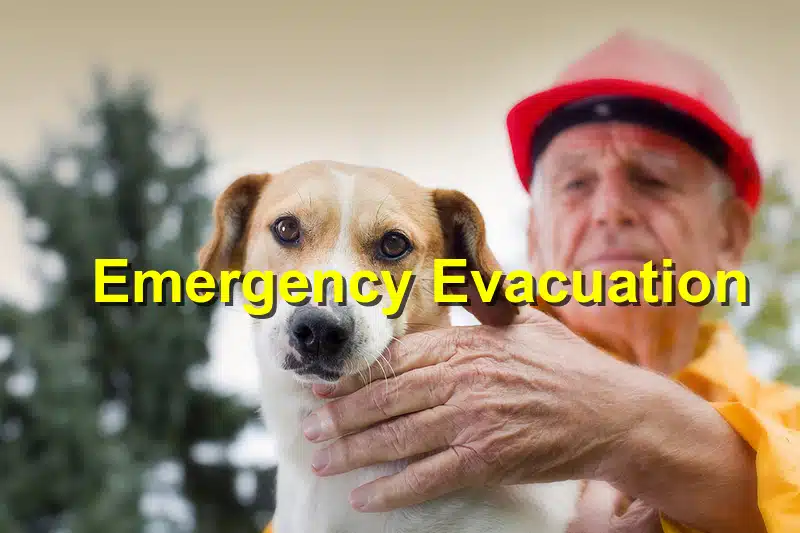Natural disasters can strike without warning, making it crucial to have an emergency evacuation plan that includes your pets. Being prepared can make all the difference in ensuring their safety during a crisis. Here’s how to create an effective emergency evacuation plan for your pets to keep them safe when disaster strikes.
1. Prepare an Emergency Kit for Your Pet
- Essentials: Pack a pet emergency kit with essentials such as food, water, and bowls for at least three to seven days. Include any necessary medications and a first aid kit.
- Identification: Ensure your pet’s ID tags are up-to-date and include your current contact information. Also, pack a recent photo of your pet in case you get separated.
- Comfort Items: Include familiar items like a favorite toy or blanket to help reduce your pet’s anxiety during stressful situations.
- Leashes and Carriers: Have sturdy leashes, harnesses, and carriers readily available for each pet. Ensure carriers are labeled with your pet’s name and your contact information.
2. Plan Ahead for Evacuation
- Know Your Evacuation Routes: Familiarize yourself with local evacuation routes and pet-friendly shelters or hotels. Have a list of nearby animal shelters or boarding facilities as a backup.
- Practice Evacuation: Conduct practice evacuations with your pets to help them get used to the process. This can reduce stress and confusion during an actual emergency.
- Pet-Friendly Accommodations: Identify pet-friendly hotels or accommodations along your evacuation route in advance. Make reservations if a disaster is imminent.
3. Keep Pets Calm During Evacuation
- Stay Calm: Pets can sense your stress, so try to remain calm during an evacuation. Speak softly and move slowly to keep your pet from becoming agitated.
- Use Calming Products: Consider using calming sprays, wraps, or medications as advised by your vet to help reduce your pet’s anxiety during the evacuation.
- Comforting Environment: If possible, keep pets in a familiar environment, like their carrier or crate, during the evacuation. This can provide a sense of security amidst the chaos.
4. Know What to Do During a Disaster
- Shelter in Place: If you cannot evacuate, keep pets indoors and in a safe room with minimal windows. Ensure they have access to food, water, and their emergency kit.
- Listen to Authorities: Follow local authorities’ instructions regarding evacuations. If you’re told to evacuate, do so immediately, and take your pets with you.
- Stay Informed: Keep a battery-powered radio or a charged mobile device on hand to receive updates on the disaster situation and evacuation orders.
5. After the Disaster
- Assess Your Pet’s Condition: After the disaster, assess your pet for any injuries or signs of stress. Seek veterinary care if needed.
- Update Information: If you’ve been displaced, update your pet’s microchip information and your contact details to reflect your current location.
- Reintroduce Routine: Try to reintroduce your pet to their regular routine as soon as possible to help them adjust and reduce anxiety.
Conclusion
Being prepared for a natural disaster is a critical aspect of responsible pet ownership. By creating an emergency evacuation plan that includes your pets, you can ensure their safety and well-being during a crisis. Remember to pack an emergency kit, plan evacuation routes, and stay informed about potential dangers. With the right preparations, you can protect your furry family members and keep them safe in any emergency.
References: Hawaii Pets, Desert Sky Hospital




